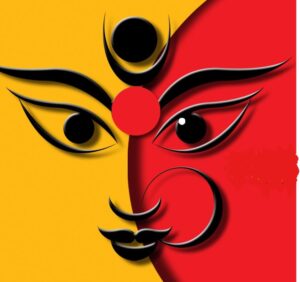Connection between Mantra and Devas
A subtle world of energies orchestrates events in human societies. Secondly, the complexity of this world matches the diversity seen in the physical world. Devas are energy configurations in this subtle world (read my post on the connection between Devas and Pitru Devas The origin of Pitrus) . Human beings can access these Devas through Mantras. Further, Mantras are related to human speech but at the mental level. Consequently, a Mantra is a combination of smaller sound units. A Bija is an example of the smallest unit. Shakti and Kilakam are two other examples. Certainly, small units are like Phoneme in human speech. They resonate in the human brain, specifically, in mind space. Intellectuals in a distant past researched this topic. They wrote about their own experiences. Also, they identified a consistent way to harness the power of a Mantra to impact energy patterns in the subtle.
The Rig Veda, the oldest collection of recorded knowledge, contains 10552 mantras or verses (read my post on the overlap among Rig Veda and Sama Veda mantras). These verses are grouped into 1024 Suktams. A few Suktams are popular even today. People continue memorizing them and vocalizing them over generations. However, only a few research the way to harness the full power in the Mantras. A famous verse in the Gita text says the following
Devas are under the spell of Mantras and Mantras are under the spell of the one who knows the way to unlock them.
The efficient way to unlock the power of a Mantra
A person repeats a mantra, mentally, sometimes a few hundred thousand times. But the person must maintain focus to gain mastery that mantra. However, not everyone has the focus and the commitment. Experts therefore suggest a technique for focus and commitment. In this connection, they discuss three anchor points for each mantra. The names of the three anchors are Bija, Shakti and Kilakam.
- Firstly, the power of every mantra remains dormant in a seed form until harnessed. The seed or the Bija of a mantra lies in a secret area of the mantra. Secondly, energy arises from this seed when a person starts meditating on a mantra. However, daily repetitions are necessary to nourish this ascending energy.
- A practitioner must take care to prevent any energy from his practice from dissipating. He can do this by infusing back the energy into the mantra. Shakti refers to the part of the Mantra which can hold this infused energy. Over a period of time a mantra becomes more powerful for the practitioner.
- The third anchor point relates to a peculiar nature of the Human mind. Human mind tends to waver. It is fine to wish for the wavering to go away. In some sense, this is not practical. What can a sincere aspirant do? The Rishis, the Seers, acknowledged this peculiar challenge. A sincere seeker needs a way to quickly refocus. It is counterproductive to get pulled into a cycle of dejection. Rishis cognized the Kilakam spots in a Mantra
The Kilakam of a Mantra
Rishis instituted an efficient way to bring the wavering and complaining mind back. They identified Kilakam points for each Mantra. The Kilakam is the portion of a mantra where the mind finds a soothing rest. The wavering mind to return back through the Kilakam.
A certain resonance arises in the nervous system of Mantra expert who has learnt these three aspects of a Mantra. This resonance serves as the path for the magical powers of Deva energies. Creating resonance is the way to truly harness the power of a Mantra. The great Seer of Kanchi suggests additional reference material for this. However, all the reference works are in native languages. According to the great saint of Kanchi, Mantrakalpaarnava, Vaikhaanasavidya, Lakshmiyamala, Shreeratnakosha, Shreetatwa, Mahalakshmiratnakosha and Shreevidyavilasa are valuable resources for a serious aspirant.
Read my other post related to Mantra and Vedas, Nivid Mantras
FAQ
Longer mantras have a Bija portion along with a Shakti and a Kilakam portion. As the name suggests, a Bija Mantra is a standalone unit. It is a charged sound with a coherence to your nervous system. An expert can identify this for you. You can go deeper into your personal meditation practice with its help. You can learn the Sahaj Samadhi Meditation practice with me.
The mantras exist in the subtle plain. This is also the way Devas exist as energies. However, some historians rate the Nivid Mantra (Nivid Mantras are Riddles) in the Rig Veda as the oldest.
You can read my short post on Mantra to Idol – The 2 face, 3 leg, 7 armed Agni as an illustrative answer for this question.


Look forward to getting deeper understanding of Mantras.
Yes. This is a fascinating subject. I'll let you know when I plan a talk on this subject